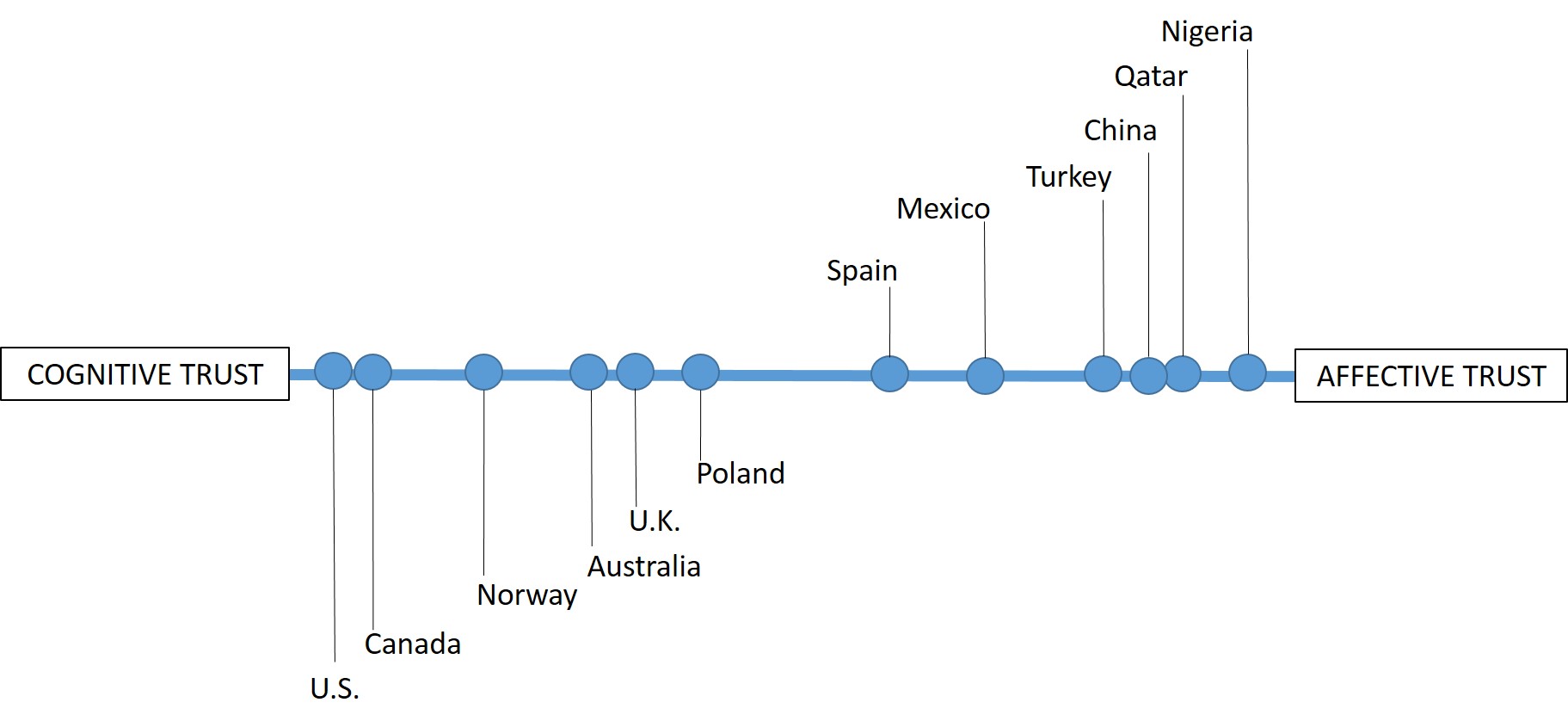When international teams cannot gather around the same table, they must to rely on remote technologies to collaborate. In these situations, agreement on corporate culture, the set of values that characterize a company and guides it practices, is not sufficient to resolve cultural divides. Companies have to provide the right collaboration tools. The technology that connects these cultures together must provide teams with insight into less obvious visual and verbal cues.
Take for example 2015 Climate Change Accord in France: The New York Times reported that nearly every nation agreed to a framework to lower greenhouse emissions but there was no firm commitment from any nation (Davenport, 2015). Companies face similar challenges as they increase their global interdependency. Even though senior managers establish firm-wide mandates, when it comes to implementation, global project drag on as staff try to overcome hurdle after hurdle. Commitment requires trust, which is difficult to achieve across cultural boundaries.
As an illustration of the challenge of communicating across nations, consider what “no” means across the globe:
Can you decipher agreement from disagreement?
- I don’t agree (German)
- I’m afraid I don’t share your opinion (French)
- I agree, up to a point (British)
- Let’s agree to disagree (British)
- We agree (Japanese)
- We agree if all of us agree (Swedish)
- We agree and disagree at the same time (Chinese)
- Have another cup of coffee (Finnish)
- I agree with you, but I don’t think my board of directors will (Swiss)
- You gotta be kidding (US)
- You are the boss (Filipino)
- I suppose anything’s possible (Brazilian)
(Hammerich and Lewis, 2013)
Now consider what happens when you are not sitting directly across the table and have to rely on remote tools to correspond. Teams in multinational organizations connect virtually across the globe every day, solving problems at a record pace. How is it that businesses stay competitive if expressing disagreement is vastly different across cultures? According to economist Pankah Ghemawat, our corporate communities are a lot less global than we think (Ghemawat, 2013). Businesses frequently do not realize they are actually working in single culture mindsets. It can appear as the only way to get things done, but it is not sustainable. In order to become more effective as global organization, and to compete with companies that are not as dependent on international cooperation, we have to pay attention to cultural variances and establish trust across the divisions.
Emotion and Confrontation
When cultures clash, familiar negotiation strategies lose their effectiveness. It becomes difficult to separate people from their problem and focus on common interests. At the same time, Meyer (2015) contends that cultural disagreements are not always obvious. In order to build trust, we need to pay attention to subtle cultural context when showing emotion and expressing disagreement.
While a heated discussion is a positive first step in individualist cultures like Russia, collectivist cultures like China prefer group harmony and avoid open conflict (Meyer, 2015). The best strategy is to listen for and reply with qualifiers that either upgrade (absolutely, completely) or down grade (partially, possibly) the disagreement. What is the most effective technology in these situations? While audio conferencing is an inexpensive and ubiquitous business tool, it lacks the contextual information to identify and address cultural confrontations because much of the indirect messaging is expression and body language.
Figure 1: Emotion and Confrontation (Meyer, 2015)
Videoconferencing provides a better opportunity because participants can adapt culturally relevant emotional expressions. Meyers points out that expression is critical because showing emotions, laughing and even personal contact is valued in some cultures but considered insensitive in others. For example, the Germans calmly express disagreement while the French tend to be much more animated; the Israelis often debate whereas the Swedes prefer to show no emotion or disagreement (Meyer, 2015). Confrontational situations are easier to decipher with video, particularly when there are mixed messages.
Cognitive and Affective Trust
Effectively using videoconferencing to establish trust in cultural context requires recognizing the difference between cognitive trust and affective trust. Cognitive is judgement from the head and based on confidence in someone’s skills, and affective trust relies on emotions and empathy (Meyer, 2015).
Figure 2: Cognitive and Affective Trust (Meyer, 2015)
While Chinese prefer interpersonal relationships to business relationships, Americans consider emotional decisions unprofessional, and often separate out feelings when making decisions (Meyer, 2015). Getting a trusting foothold in emerging markets requires establishing an emotional connection, so when Americans try to act professionally they may actually be creating distrust when they interact by avoiding emotions with developing economies, such as India and Brazil.
The common strategy for overcoming distrust is to connect outside of work and establish personal relationships with your colleagues, but that is not practical for international companies where the typical business workday spans the globe. An alternative is to capitalize on videoconferencing and establish a series of strategic one-to-one private sessions outside of routine conference calls. These informal sessions can help to build lasting trust between associates from different cultures, and make their in-person meetings more productive. The next post outlines seven steps for holding successful one-on-one meetings at the desktop and in collaboration spaces.
References
Davenport, C. (2015). Nations approve landmark accord in Paris. New York Times. Retrieved from http://www.nytimes.com/2015/12/13/world/europe/climate-change-accord-paris.html?_r=0
Ghemawat, P. (2013). How global are we? IEDC-Bled school of management. Retrieved from https://www.iedc.si/docs/default-source/iedc-publication/book-of-the-year-2013.pdf?sfvrsn=0
Hammerich, K. and Lewis, R. D. (2013). How different cultures say “I disagree”. Quartz. Retrieved from http://qz.com/117519/how-different-cultures-say-i-disagree
TURNING POINT is Mark Peterson's personal take on innovation and collaboration influencing today's corporate strategy. To have a conversion about what takes to implement collaborative solutions efficiently and at enterprise scale, contact Mark Peterson




